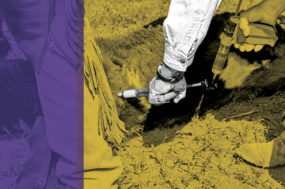The BSE (bovine spongiform encephalopathy) crisis that hammered the industry in 2004 required vast efforts from producers and trade officials to recover from. Trade to Asian markets took almost a decade to return to levels seen before the BSE-stricken dairy cow crossed the border from Canada.
In some nations, the recovery still isn’t back to full strength. In 2003, the U.S. shipped 375,455 metric tons of beef to Japan – our highest bidder for U.S. beef. Even though 2018 will be another record year for exports, the amount to Japan still falls short of our pre-BSE levels.
So why bring all this up now? Because beef analysts now expect foot-and-mouth disease (FMD) to be the next biosecurity threat to the U.S. beef herd, and it could make BSE pale in comparison.
Research done by the Center for Food Security and Public Health at Iowa State University shows FMD as the greatest economic threat to animal agriculture in the U.S., one that would devastate the entire economy. An outbreak of FMD would stop all exports of livestock and place rigorous, perhaps impossible barriers to interstate transfer of livestock.
The Iowa State report – now four years old – issued the siren call for more vaccine supplies to contain FMD’s arrival. The study urged $150 million annually for five years to address supply needs and to make that vaccine storage specific to U.S. production needs for all livestock species. Development of the vaccines will require 24 different strains of the virus kept in national antigen banks, and the costs of this stockpile will be significant.
FMD vaccine surege capacity for emergency use in the United States.
Luckily, elected leaders recognize this isn’t a political issue but rather a food security issue. Before the Christmas holiday, Congress passed a new $867 billion farm bill, quickly signed by the president, which includes $300 million in funding for the FMD vaccine bank and other food safety and inspection programs.
Passage of the bill is a solid beginning, but the issue also will require more vigilance from the industry, not just the USDA, FDA and the regulatory agencies. These are your herds, your ranches and your careers at stake. Making sure there is an emergency plan in place – with vaccine supplies ready for all FMD strains – creates a foundation. Watching our trade partners, building greater systems of traceability and adopting more biosecurity on the ranch are also critical.
The livestock industry deserves major credit for getting the facts out on FMD risks. It’s absolutely necessary to recognize them because, with FMD’s arrival, our preparation will make all the difference in containing it. ![]()

-
David Cooper
- Managing Editor
- Progressive Cattleman
- Email David Cooper







